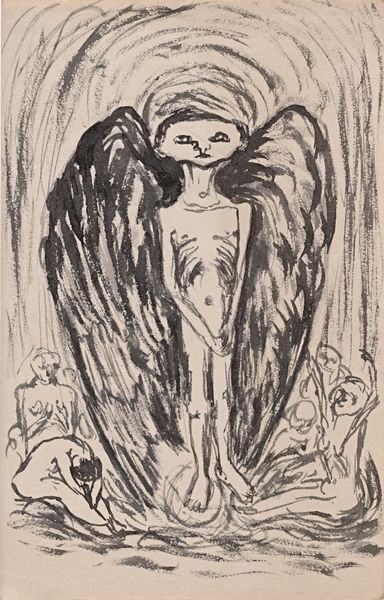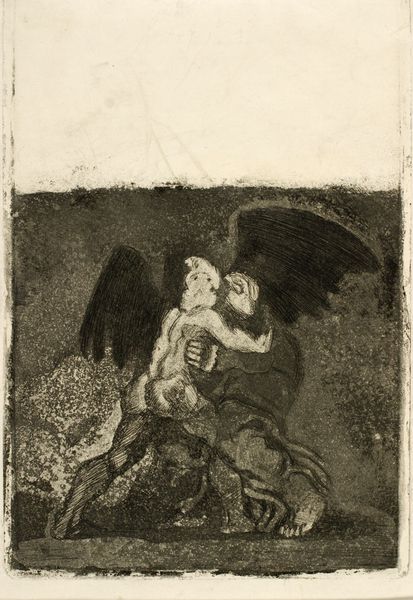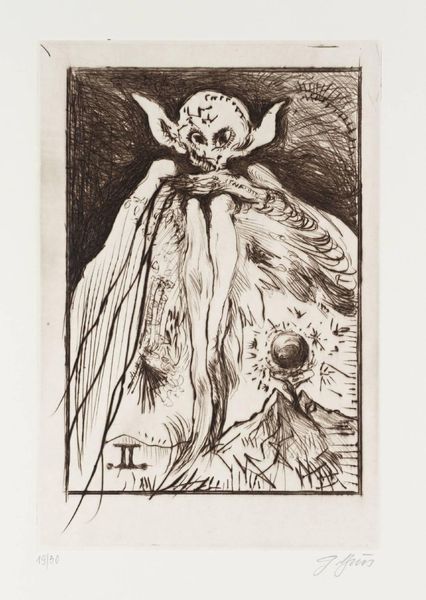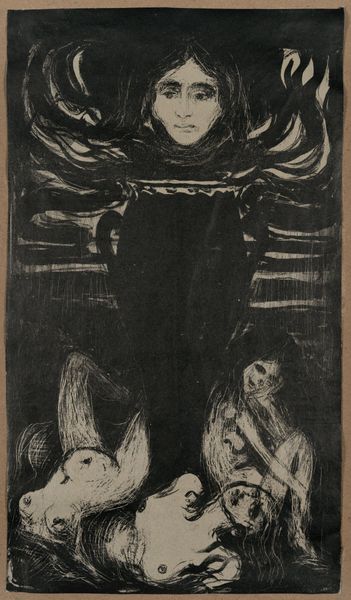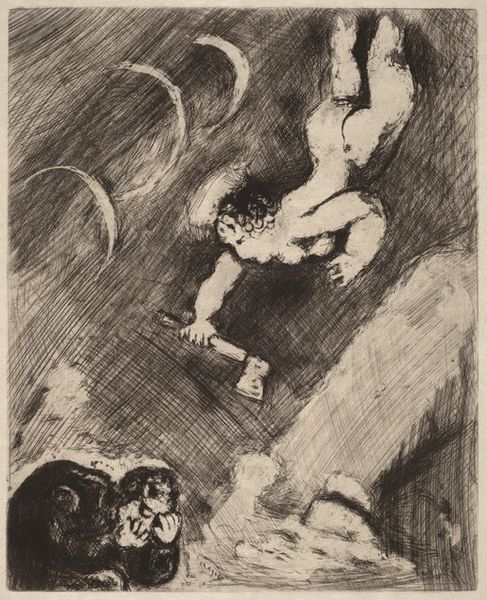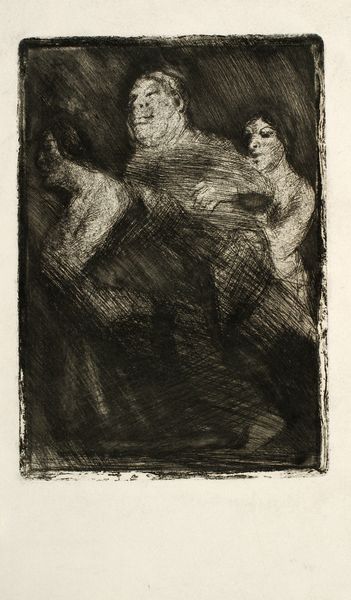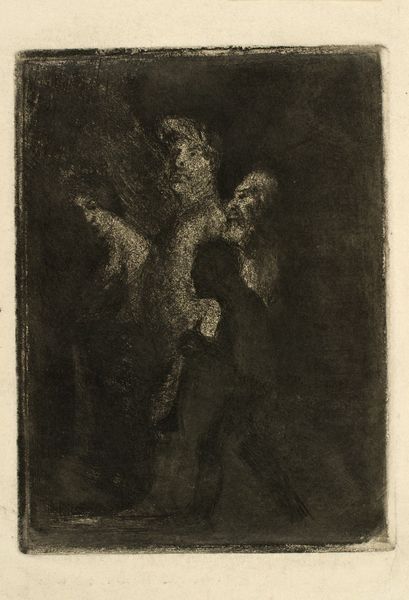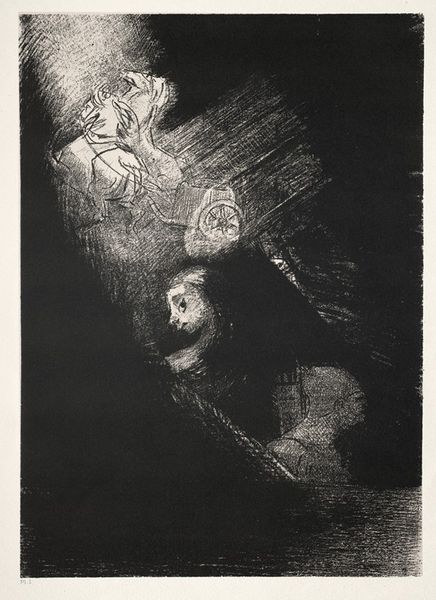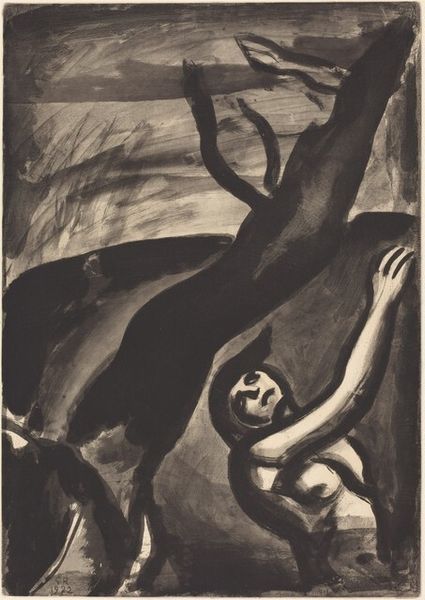
Copyright: Public Domain: Artvee
Editor: This is Edvard Munch's "Harpy," created in 1891, using ink on paper. It's… haunting. The dark, winged figure looming over a skeletal body makes me feel uneasy. What do you see in this piece? Curator: I see a potent amalgamation of cultural memory and personal trauma. The Harpy, traditionally a figure of avenging female spirit, embodies both seduction and destruction. Consider the power that imagery has across centuries - the female form combined with predatory elements triggers primal anxieties related to vulnerability, mortality, and even the life-giving female. Editor: So, is it all about fear and death then? Curator: Not entirely. Look at the delicate lines forming the woman’s face, juxtaposed with the bold, almost violent strokes creating the wings. Is there perhaps an element of mourning or even protectiveness present? Consider what might lay below this symbolic scene? Is there perhaps an embrace or longing hidden within these stark visual metaphors? Editor: That's a fascinating perspective. I initially focused on the horror aspects, but now I see a more nuanced message, a potential for… empathy even. Curator: Precisely. Munch understood how images could be emotional time capsules. He wielded symbolism not merely to shock, but to access deep reservoirs of human experience: desire, loss, and, perhaps, the complex relationship between life and death itself. We feel our vulnerability reflected back at us. Editor: It really is much more complex than I first thought. The layers of symbolism give it so much more depth. Curator: Yes, and exploring those layers is key to understanding not just the artwork, but our shared humanity. It is art such as this that shows the emotional weight an image can have.
Comments
No comments
Be the first to comment and join the conversation on the ultimate creative platform.
